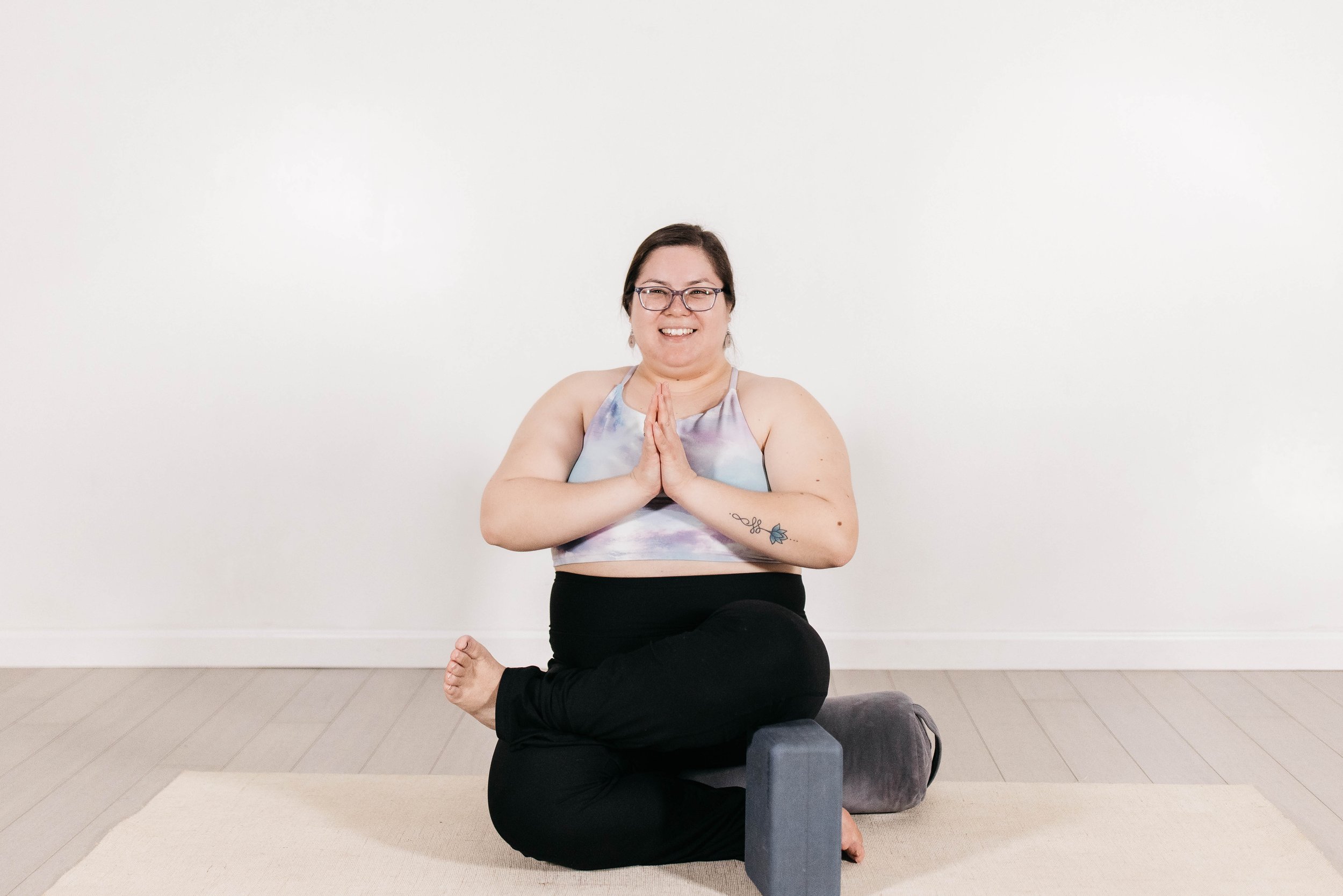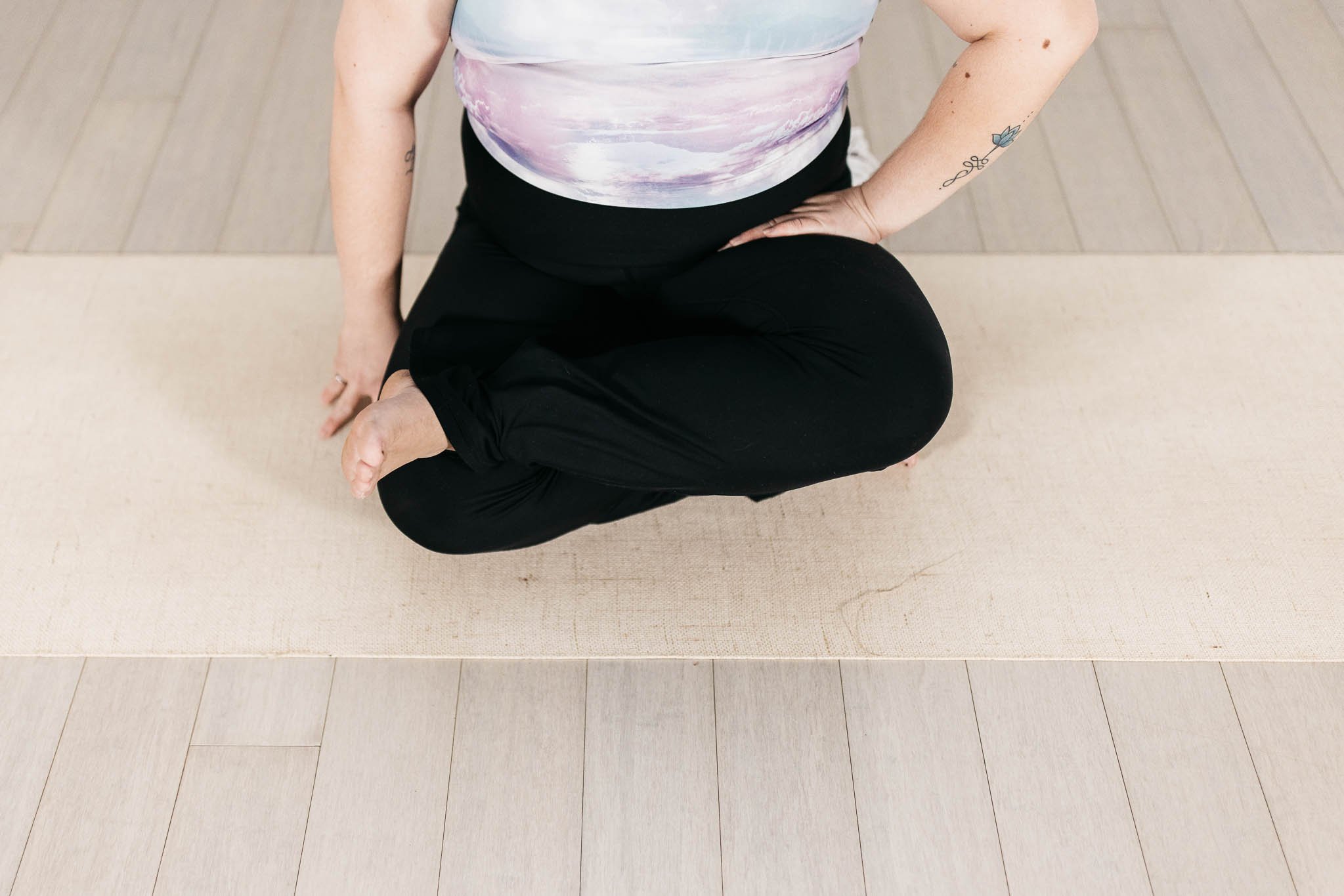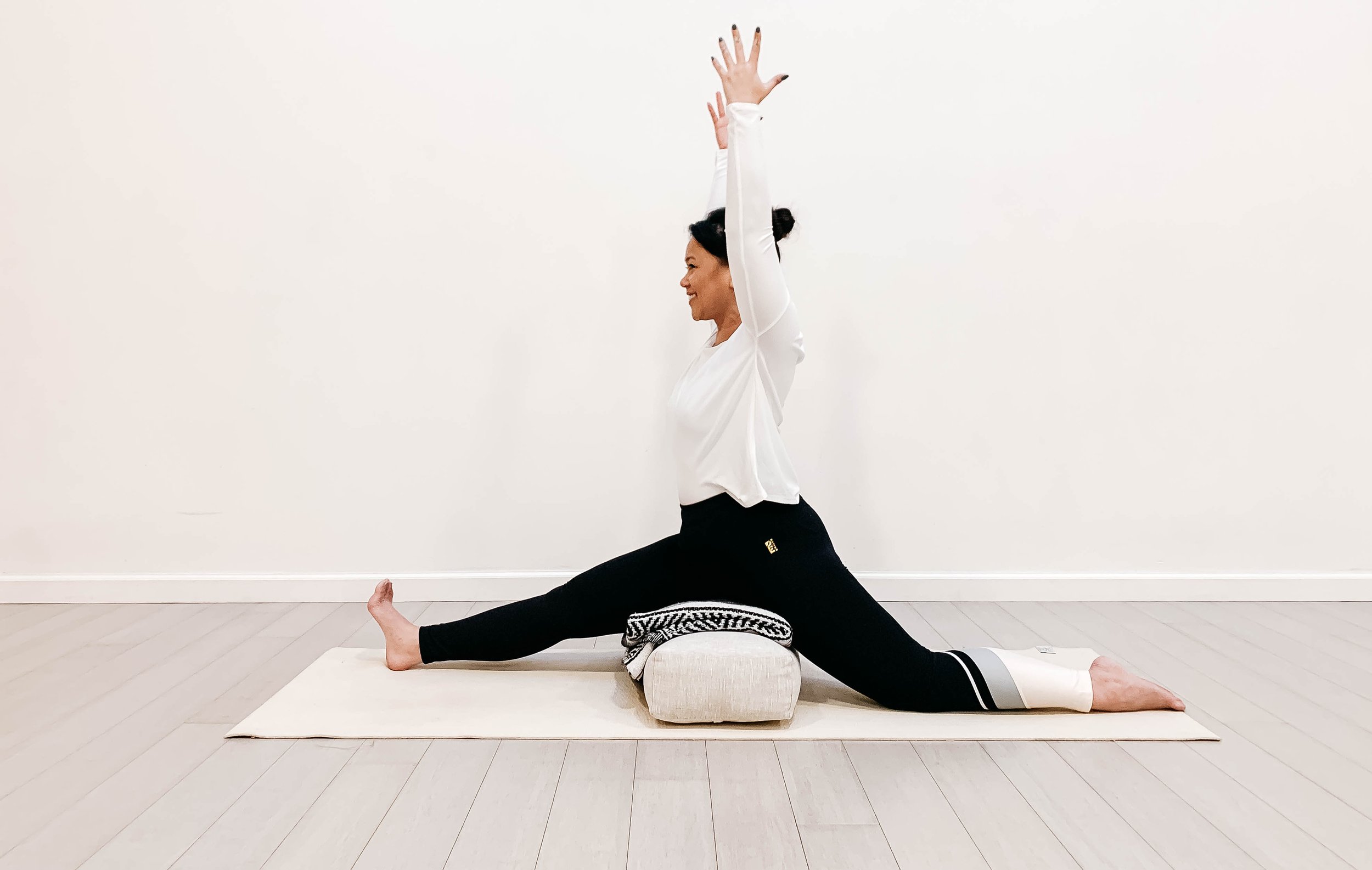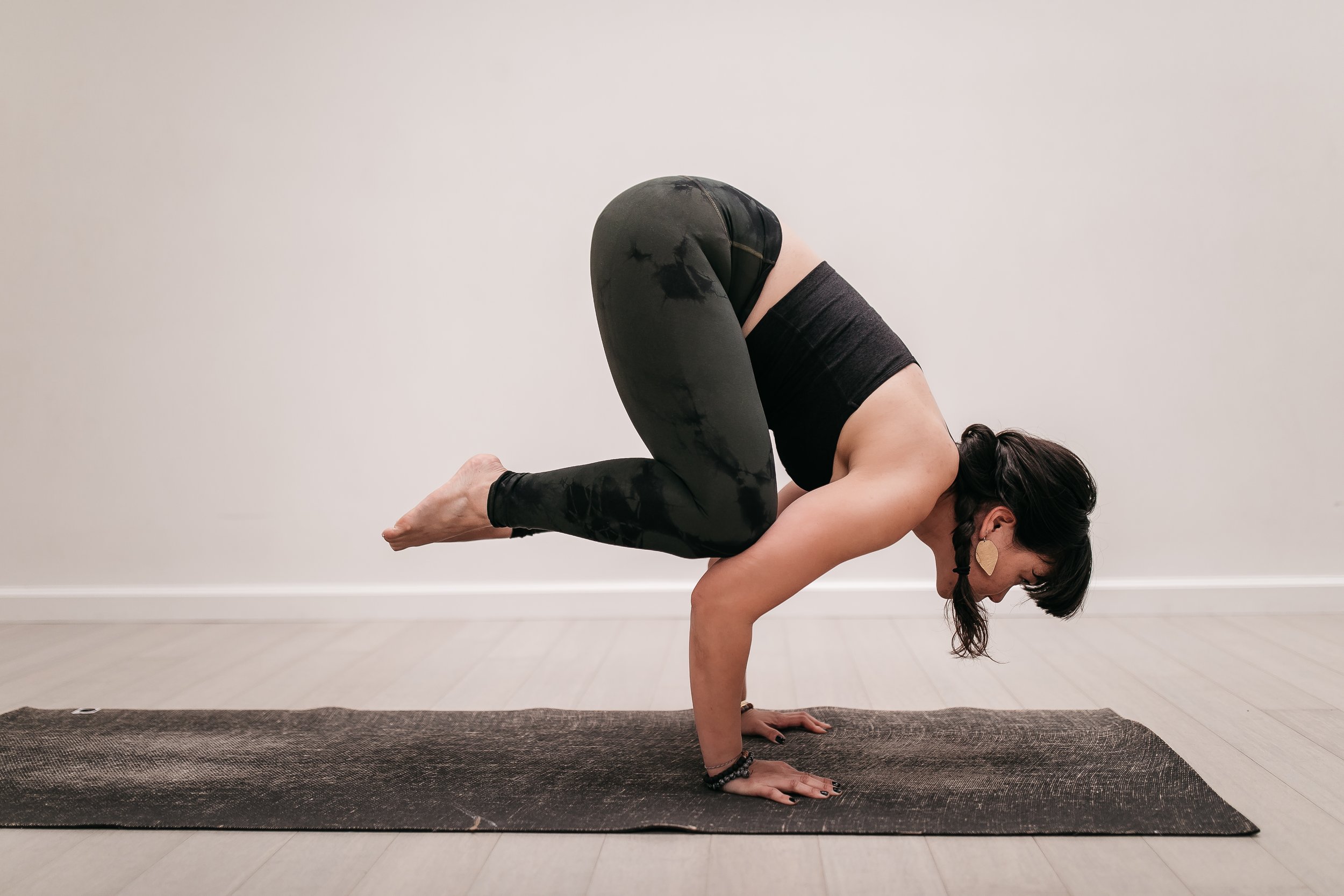ARDHA PADMASANA
Half Lotus
Padmasana (Lotus Pose) is perhaps one of the most iconic of all the traditional yoga asanas. In the Hatha tradition it can be traced back more than 500 years, and no doubt it’s much older than that in the broader Yoga tradition. It’s typically considered one of the four “best” (shreshtha) poses, along with the Adept’s Pose (siddhasana), the Auspicious Pose (bhadrasana), known today as Bound Angle (baddha konasana), and, somewhat surprisingly, the Lion Pose (simhasana).
The symbolism that attaches to the lotus is rich and varied. Hindu deities are often pictured seated on pedestals formed of stylized lotus petals, and the flower itself represents many gods and goddesses, including Vishnu, Surya (the Sun), Indra, and Kama (the Hindu Cupid). The lotus also symbolizes perfection and purity, the beauty of an ever regenerating creation, and the Sun. It’s also compared to the Cosmic Tree, which first emerged from the deity Varuna’s navel, with other deities hanging like fruit from its branches. This only scratches the surface of what the lotus means to Indian culture.
The pose itself, be aware, is highly problematic, especially for Westerners, and I should say right at the beginning that if you have any issues with either or both of your knees, this is NOT a pose for you. I also want to be very clear that if you do attempt this pose–which here we’ll only be working on the half (ardha) version–to follow the instructions for getting into and out of it very carefully, DO NOT cut corners.
If you’re just starting to learn the pose, it’s a good idea before attempting it to warm up the hips and groins. Poses might include Half (ardha) or full Hero Pose (virasana), Bound Angle Pose (baddha konasana), and a pose that I call Paper Clip Pose (a name provided by my incredibly intelligent daughter, who in this respect takes after her mother). Here’s how:
Sit on a height, maybe a thickly folded blanket or bolster (higher if you’re tighter in the hips). Bring your left heel to your right sitting bone and lay that leg on the floor. Then take your right ankle just to the outside the left knee and lay that leg down as well. It’s crucial that the ankle be just OUTSIDE the knee, so the right sole is perpendicular to the floor. Press your right thumb into the hip crease, take firm hold of the thigh bone, and spin it laterally, that is, from the inner thigh to the outer. You can then lean your torso forward, coming from the hips and not the lower belly, and press your hands on the floor in front of your shins. Alternatively, you can pull up a chair in front of your shins and rest your forearms or head on the seat (you may need a block under your forehead). Stay for at least two (excruciating) minutes, then reverse the legs and repeat for the same (excruciating) length of time.
Now for Half Lotus. Continue to sit on your height, and again bring the left heel to the right sitting bone, laying that leg on the floor. As already stressed, follow these instructions closely. Bring your right thigh to your belly and squeeze the calf against the back thigh; in other words, completely flex the right knee. When bringing the right foot into place, there should be NO rotary movement in the knee (which is a hinge joint), it all happens in the rotary hip. Swivel the outer edge of the right foot into the left hip crease, bringing the knees as close together as you can. Once again, the sole of the top foot should be more or less perpendicular to the floor. If you’re new to the pose, hold for no longer than about 10 seconds, then bring the right thigh with the knee still fully flexed back to the front torso, then stretch the leg straight forward out on the floor. Repeat for the same length of time with the left leg up.
One of my former teachers had a list of what he called “everyday poses,” which means just what it says: there are certain poses that need to be practiced regularly or not at all, among them Headstand (shirshasana) and Lotus. I would suggest 4 to 5 times a week. Gradually build the time you stay in the pose in 5 to 10 second weekly increments, staying very alert for any discomfort in one or both knees. Nest Yoga strongly advises that you ONLY attempt the full pose under the direct supervision of an experienced and trusted teacher. After finishing, lie on your back, secure the big toe of the right foot with the right index and middle fingers (or loop a strap around the sole), and stretch up through the heel (Reclining Big Toe Pose, supta padangushthasana). Actively contract the front thigh muscle (quadriceps), hold for a minute or so, and reverse with the left leg for the same length of time.
There are various ways to place the hands.
Lay the upturned hands in your lap, the back of one hand resting in the palm of the other.
Bring the palms together and rest the outer edges of your thumbs on your sternum. This is called anjali mudra. Spread the palms wide and press the palms evenly to each other.
Cup the palms and bring one hand over the other, the bottom cup facing up, the top cup down, in front of your belly. This pose is called samputita pankajasana. A samputa is a hemispherical bowl, pankaja literally means “mud born,” another name for the lotus, which famously floats pristine on the surface of a pond, while its roots reach down into the mud on the pond’s floor. This hand position is called kacchapika mudra, the “tortoise seal.”
Rest your hands on your thighs or knees, palms down. The latter is known as samasana, the Even (sama) Pose.
Cross your arms in front of your torso and hold your toes, right hand right toes, left hand left. This is called karmukhasana. Karmukha has many meanings, you choose: rainbow, bow, bamboo, a kind of honey, and efficacious.
The hands hold the same side feet, that is, right hand left foot, left hand right. This is called mukta padmasana, Free Lotus Pose.
There are also a number of synonyms for padmasana (I’ve left off asana at the end of each):
amburuha: “water growing” (ambu, “water”)
ambuja: “water born”
abja: “born in water”
Goraksha kamala: “cowherd lotus” (Goraksha is a semi-legendary early progenitor of Hatha Yoga)
kamala: “lotus” (and Vice-president of the US)
saroruha: “lake-growing”
saroja: “lake born”
Old Iyengar hands would always marvel at the difficulty rating given padmasana in Light on Yoga. Each of the 198 poses in the book is given a number from 1, the easiest pose, like Tadasana, to 60, the most challenging, the next to next to last pose in the book, the impossible seeming tiriang mukhottanasana, a standing backbend in which the performer bends backwards and holds her ankles (not recommended). For most Westerners, who regularly sit on chairs, which plays havoc with hips and groins, we might expect Lotus to be somewhere in the high 20s to low 30s. But for the traditional Indian, who sits mostly on the floor, padmasana is the proverbial piece of cake, and so is rated, for us, at a completely unreasonable 4; for comparison, Triangle Pose (trikonasana) is a 3. Speculation was that since the book first appeared in 1966, Mr Iyengar wasn’t yet familiar with some of his Western students more severe limitations caused by chair sitting.







